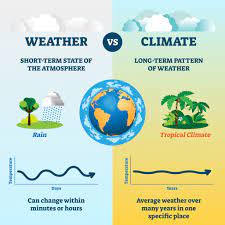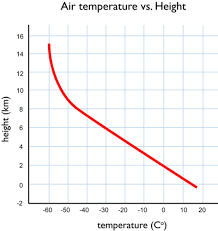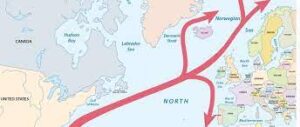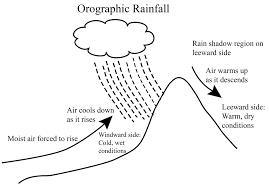Weather and climate are two of the most important factors that influence our daily lives, and it is essential to understand the difference between the two. While weather refers to the short-term conditions of the atmosphere, such as temperature, precipitation, and wind, climate refers to the long-term patterns and trends of these conditions.

Table of Contents
What is weather?
Weather refers to the state of the atmosphere in a particular place and time, including temperature, humidity, precipitation, wind, and other atmospheric conditions. It is the day-to-day or hour-to-hour changes in the atmosphere that we experience, such as sunny, cloudy, rainy, or snowy conditions. Weather is influenced by a variety of factors, including air pressure, temperature, and moisture, as well as the Earth’s rotation, the distribution of land and water, and other environmental factors. Weather can change rapidly and is often unpredictable, making it difficult to predict with certainty.
What is Climate?
Climate refers to the long-term patterns and trends of weather in a particular region or across the Earth as a whole. Unlike weather, which can change rapidly over short periods of time, climate represents the average conditions of temperature, precipitation, humidity, wind, and other atmospheric variables over a period of years, decades, or centuries.
Climate is influenced by a variety of factors, including the amount of solar energy received by the Earth, the distribution of land and water, atmospheric gases, ocean currents, and other environmental factors. Human activities, such as burning fossil fuels and deforestation, can also influence the Earth’s climate by altering the balance of greenhouse gases in the atmosphere, which can lead to global warming and other changes in climate patterns.
Difference between Weather and Climate
| Feature | Weather | Climate |
|---|---|---|
| Definition | The short-term atmospheric conditions in a specific location | The long-term average of weather patterns in a specific region |
| Timescale | Daily to weekly | Decadal to centuries |
| Measurement | Air temperature, wind speed, precipitation, cloud cover, etc. | Average temperature, precipitation, cloud cover, etc. |
| Variability | Highly variable | Relatively stable over time |
| Predictability | Relatively unpredictable | More predictable over time |
| Impacts | Immediate, local, and short-term | Long-term, widespread, and global |
Factors Affecting Climate of a Region
There are many factors that affect climate, both natural and human-caused. Here are some of the most significant factors:
Latitude
Latitude has a significant effect on seasons. The Earth’s axial tilt, combined with its orbit around the sun, creates different amounts of solar radiation at different latitudes, which in turn affects the timing and intensity of the seasons.
At the equator, the sun’s rays are almost perpendicular to the Earth’s surface, resulting in relatively constant amounts of solar radiation throughout the year. As a result, the equator experiences little seasonal variation in temperature and weather.
As you move towards the poles, the angle of the sun’s rays becomes increasingly oblique. This means that during some parts of the year, the poles receive very little solar radiation, leading to long periods of darkness and colder temperatures. Conversely, during other parts of the year, the poles receive more direct sunlight, leading to longer days and warmer temperatures.
Altitude
Altitude also has an effect on seasons, although the effect is more indirect and less significant than latitude. As you increase in altitude, the atmosphere becomes thinner, leading to lower air pressure and lower temperatures. This means that even in equatorial regions, mountainous areas can experience cooler temperatures and more pronounced seasonal changes than nearby lowland areas.
In general, as you move to higher elevations, temperatures become colder and there is more variation in temperature throughout the day and year. This is because the air at higher altitudes is less dense, which means it cannot store as much heat and is more affected by changes in solar radiation.

For example, in the Rocky Mountains in North America, the temperatures in the summer months are generally cooler than nearby lowland areas. During the winter months, the mountains experience significant snowfall due to the cold temperatures and increased precipitation caused by the lifting of moist air over the mountains.
Distance from Sea
The distance from the sea can have a significant impact on the climate of a region. Here are some of the ways in which distance from the sea affects climate:
- Temperature: Coastal regions generally experience milder temperatures compared to inland regions. This is because the sea has a moderating effect on temperature. In summer, the sea cools down the adjacent land, while in winter, it warms it up. Therefore, regions near the sea have a smaller temperature range throughout the year.
- Humidity: Areas near the sea are usually more humid than inland regions. This is because the sea provides a source of moisture that can be evaporated into the air. The presence of water also means that there is more rainfall in coastal regions compared to inland areas.
- Wind: Coastal areas tend to be windier than inland regions. This is because the temperature difference between the land and sea creates a pressure gradient that causes the air to flow from high-pressure areas over the sea to low-pressure areas over the land.
- Precipitation: The amount of precipitation in a region is influenced by the distance from the sea. Coastal regions typically receive more precipitation than inland areas. This is because the moist air from the sea rises over the land, cools, and condenses into clouds, which then release their moisture as rainfall.
In general, regions near the sea have a more temperate climate with milder temperatures, higher humidity, and more rainfall. In contrast, inland regions tend to have a more extreme climate with hotter summers, colder winters, lower humidity, and less rainfall.
Prevailing Wind
The prevailing wind can have a significant impact on the climate of a region. The wind can affect the temperature, humidity, and precipitation patterns of an area, which can in turn impact the flora and fauna that inhabit the region.
In general, prevailing winds blow from a particular direction for most of the year, and they can be influenced by a number of factors, including the position of high and low-pressure systems. The prevailing winds can bring with them different weather conditions, such as warm, moist air or cold, dry air.
For example, the prevailing westerlies in the mid-latitudes of the northern hemisphere bring moisture from the Pacific Ocean to the western coast of North America, resulting in the temperate rainforests found in the region. In contrast, the prevailing easterlies in the tropics bring dry air to the Caribbean and Central America, leading to arid conditions in some areas.
Ocean Currents
Ocean currents can have a significant impact on the climate of a region. They can affect temperature, precipitation, and weather patterns, and can also influence marine ecosystems and the distribution of marine life.
One example of how ocean currents can affect climate is the Gulf Stream, which is a warm ocean current that flows from the Gulf of Mexico along the eastern coast of North America and then across the Atlantic Ocean to Europe. The Gulf Stream carries warm water and heat from the tropics to the higher latitudes, which helps to moderate the climate of western Europe.

Without the Gulf Stream, the climate of western Europe would be much colder, more similar to that of Newfoundland, Canada, which is at the same latitude. The Gulf Stream also contributes to the high precipitation levels along the western coast of Europe, as warm, moist air from the ocean is brought inland by the current and meets cooler air over land, leading to the formation of clouds and rain.
Another example is the Peru Current, which is a cold ocean current that flows along the western coast of South America. The Peru Current brings cold water and low levels of nutrients to the surface, which limits the growth of phytoplankton and reduces the productivity of marine ecosystems.
The Peru Current also contributes to the arid climate of the Atacama Desert in northern Chile, which is one of the driest regions on earth. The cold water from the current cools the air over the ocean, which reduces the amount of moisture that can be carried inland, resulting in low precipitation levels in the region.
Direction of Mountain Chain
The direction of a mountain chain can have a significant impact on the climate of a region by influencing the distribution of precipitation and temperature patterns. When moist air flows towards a mountain range, it is forced to rise, and as it rises, it cools and condenses, leading to the formation of clouds and precipitation. As a result, the windward side of a mountain range typically receives more precipitation than the leeward side.
The direction of the mountain range can also affect the temperature of the region. For example, if a mountain range runs east to west, the western slopes will receive more direct sunlight and therefore be warmer than the eastern slopes, which will be in shadow for much of the day. This can create significant differences in temperature and weather patterns between the two sides of the mountain range.

An example of this can be seen in the Rocky Mountains in North America. The Rocky Mountains run north to south, and the prevailing winds in the region blow from west to east. As a result, the western slopes of the Rockies are wetter and cooler than the eastern slopes, which are drier and warmer. The differences in temperature and precipitation between the two sides of the mountain range have a significant impact on the ecosystems and human activities in the region.
Vegetation Cover
Vegetation cover can have a significant effect on the climate of a region. Here are some of the ways in which vegetation cover can impact climate:
- Albedo: Vegetation cover can affect the amount of solar radiation that is reflected back into the atmosphere. Vegetation has a lower albedo (reflectivity) than bare soil or rocks, meaning that it absorbs more of the sun’s energy and heats up the surrounding air.
- Evapotranspiration: Vegetation cover can increase the amount of water that is evaporated from the surface (evapotranspiration). This process cools the surrounding air as the water vapor absorbs energy from the atmosphere. Evapotranspiration also releases moisture into the air, which can increase humidity and cloud cover, further cooling the region.
- Carbon dioxide absorption: Vegetation can absorb carbon dioxide from the atmosphere through photosynthesis. This process can help to reduce the concentration of greenhouse gases in the atmosphere, which can lead to a cooling effect.
- Wind speed: Vegetation cover can slow down wind speed, which can reduce the amount of heat lost from the surface through convection. This can lead to a warming effect in some cases.
- Local climate patterns: Vegetation cover can influence the formation of local climate patterns, such as monsoons and sea breezes. For example, forests can enhance the formation of monsoons by releasing moisture into the air and increasing humidity levels.
Overall, the effects of vegetation cover on the climate of a region can be complex and vary depending on the specific characteristics of the vegetation, the climate, and the landscape.
Greenhouse Gases
Certain gases in the Earth’s atmosphere, such as carbon dioxide, methane, and water vapor, trap heat and prevent it from escaping into space. This greenhouse effect is necessary for life on Earth, but increased concentrations of these gases due to human activities, such as burning fossil fuels, can cause the Earth’s temperature to rise, leading to climate change. The climate of a region is also affected by the concentration of green house gases.
Summary : Weather and Climate
- Weather refers to the day-to-day atmospheric conditions, such as temperature, precipitation, wind, and humidity, in a specific location.
- Climate refers to the long-term patterns of weather conditions in a region, including temperature, precipitation, and seasonal variations.
- Weather is variable and can change rapidly, while climate is relatively stable over long periods of time.
- Weather is affected by short-term atmospheric conditions and phenomena, such as thunderstorms, fronts, and hurricanes, while climate is influenced by long-term factors, such as latitude, elevation, and ocean currents.
- Weather is measured in real-time using instruments such as thermometers, barometers, and anemometers, while climate is assessed using statistical analysis of weather data over long periods of time.
- Weather forecasts provide short-term predictions of future atmospheric conditions, while climate projections offer long-term predictions based on models that take into account future trends in atmospheric conditions.
- Weather events can have immediate impacts on human activities and infrastructure, such as flooding, drought, and extreme heat, while changes in climate can have more gradual and widespread impacts, such as sea level rise and shifts in ecosystems.
- Weather and climate can both be affected by human activities, such as greenhouse gas emissions and land use changes, but the impacts of climate change are typically more far-reaching and long-lasting.
- Weather is experienced on a local or regional scale, while climate is a global phenomenon that affects the entire planet.
- Understanding the differences between weather and climate is important for making decisions about issues such as disaster preparedness, urban planning, and natural resource management.
MCQ : Weather and Climate
Q. What is weather?
a) The long-term average of atmospheric conditions in a specific area
b) The state of the atmosphere at a specific time and place
c) The amount of precipitation in a given area
d) The amount of water vapor in the air
Answer: b) The state of the atmosphere at a specific time and place.
Explanation: Weather refers to the short-term atmospheric conditions in a particular location. It can change quickly and is often unpredictable. Weather conditions include temperature, humidity, precipitation, wind speed, and atmospheric pressure.
Q. What is climate?
a) The state of the atmosphere at a specific time and place
b) The long-term average of atmospheric conditions in a specific area
c) The amount of precipitation in a given area
d) The amount of water vapor in the air
Answer: b) The long-term average of atmospheric conditions in a specific area.
Explanation: Climate refers to the long-term patterns and trends of atmospheric conditions in a particular area. It is the average weather over a period of time and is relatively stable and predictable. Climate is influenced by factors such as latitude, altitude, ocean currents, and prevailing winds.
Q. What is the main difference between weather and climate?
a) Weather refers to long-term atmospheric conditions, while climate refers to short-term atmospheric conditions.
b) Weather refers to the average atmospheric conditions over a period of time, while climate refers to the atmospheric conditions at a specific time and place.
c) Weather refers to the short-term atmospheric conditions at a specific time and place, while climate refers to the long-term average of atmospheric conditions in a specific area.
d) Weather and climate refer to the same thing.
Answer: c) Weather refers to the short-term atmospheric conditions at a specific time and place, while climate refers to the long-term average of atmospheric conditions in a specific area.
Explanation: The main difference between weather and climate is the time frame that they refer to. Weather describes the atmospheric conditions at a specific time and place, while climate describes the average conditions over a longer period of time.
Q. Which of the following is an example of weather?
a) The average temperature in Los Angeles in the month of August
b) The amount of rainfall in the Amazon rainforest over the past 100 years
c) The temperature and humidity levels in New York City on a particular day
d) The average number of hurricanes that occur in the Atlantic Ocean each year
Answer: c) The temperature and humidity levels in New York City on a particular day.
Explanation: Weather refers to the short-term atmospheric conditions at a specific time and place. The temperature and humidity levels in New York City on a particular day are examples of weather.
Q. Which of the following is an example of climate?
a) A heat wave in Chicago in July
b) A tornado that strikes Oklahoma in the spring
c) The average temperature in Phoenix, Arizona over the past 50 years
d) The amount of snowfall in Boston in a particular winter
Answer: c) The average temperature in Phoenix, Arizona over the past 50 years.
Explanation: Climate refers to the long-term average of atmospheric conditions in a specific area. The average temperature in Phoenix, Arizona over the past 50 years is an example of climate.
Important Links